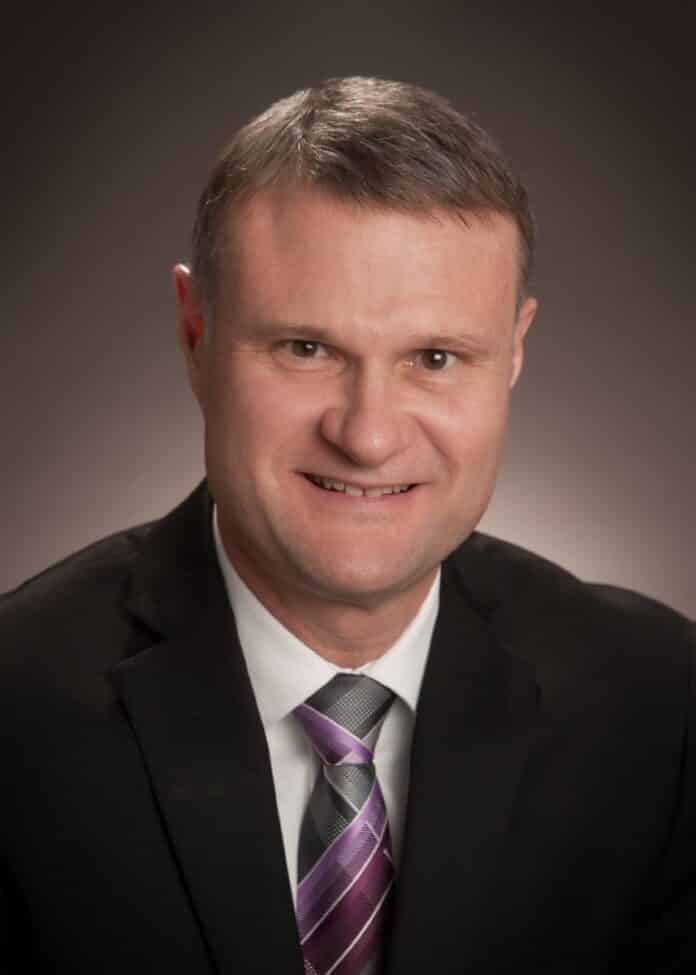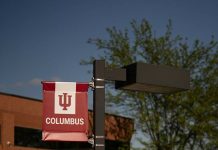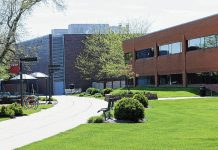As the Bartholomew Consolidated School Corp. continues in-person learning, school officials are looking at options to continue making the reopening process as smooth — and safe — as possible for everyone.
This process includes watching the COVID-19 dashboard indicators, which are intended to guide BCSC on deciding whether or not schools can continue to meet for in-person learning, which began Aug. 10.
Whether or not in-person learning continues at BCSC depends on whether certain COVID-19 data indicates that the school system is in a “minimal,” “moderate” or “substantial” spread category. Superintendent Jim Roberts has said in the past that an overall designation of substantial spread would result in a move to eLearning.
On Thursday, the task force posted the following data on its community spread dashboard:
The per capita positive rate is 5.8, and the number is increasing (as of Sept. 16)
The percent positive test rate is 5.3% and increasing (as of Sept. 12)
There are three COVID hospitalizations, and the number is increasing (as of Sept. 16)
Test turnaround time is 2.7 days, and the number is increasing (as of Sept. 16)
Per capita positive rate is in the moderate spread category.
Percent positive test rate, hospitalizations and test turnaround time are in the minimal spread category.
At Monday’s school board meeting, Roberts credited the relatively low numbers following Labor Day weekend to “community awareness” and Indiana’s COVID-19 standards. He added that people seemed to have learned their lesson from the spike that followed Fourth of July celebrations.
However, school board president Jeff Caldwell said that it may be too early to know if Labor Day weekend activities led to increased spread.
“It was the week before Aug. 10 and the week of Aug. 10 that we saw the local Bartholomew County spike that I still think was attributable to the July 4 weekend and the time it took to really mature,” he said. “So I think it’s going to be another three weeks before we know how well we all behaved, collectively, on Labor Day.”
Caldwell also expressed some concern over the rising test turnaround time. BCSC director of nursing Kelli Thompson said that the health department is working on setting up more testing sites. She said there will be sites at the health department and the Windrose Health Network in Edinburgh, as well as a mobile testing site in Hope on Mondays.
As far as the turnaround time, Thompson said that while she knows the health department site will use Optum Labs for test results, she’s not sure which companies the other sites will use.
Board member James Persinger asked if the health department could set up temporary testing sites at school buildings.
Roberts replied, “There’s been a little conversation about that, so I think the possibility could exist.”
Roberts also presented an update on how schools are doing with reopening policies. He reported that mask compliance is 95.4% for elementary schools and 95.0% for secondary. He reported that instances of “non-compliance” were mostly due to masks being worn below the nose — in some cases because a mask was too big for the child.
While mask compliance is mostly a success, social distancing remains a challenge. Roberts said this is often due to classroom numbers or to schools having a large percentage of students attending in person. Rockcreek Elementary has seen 88% of its students return to in-person classes, he said.
“We do see those challenges persisting as more students come back to in-person instruction,” Roberts said. “We certainly are seeing an increase in students coming back.”
Roberts said that BCSC has been visiting buildings that struggle with social distancing and having conversations with teachers and administrators. He said that the two main ways to aid social distancing appear to be either making “the best use of space possible” or reducing the number of people in a school building.
Roberts said that this second option could be accomplished through a hybrid model, where different groups of students attend school in-person on different days. He said that there is a team looking into that option so that they can have a hybrid model in place just in case.
BCSC has also been discussing “creative instructional models” such as hybrids with the Columbus Educators’ Association. Roberts said that the school corporation is collaborating with the CEA to “address challenges” that teachers face amid the pandemic.
One continuing challenge is that the majority of teachers have to teach either BRIDGE or Columbus Virtual Pathway students (or both) in addition to their in-person pupils.
Roberts said that this was “not by design” and that BCSC originally hoped to have enough staff members participate remotely that there would be a balance. However, the need for teachers to work double-duty became apparent — in part because of the large number of students who chose to enroll in virtual learning.
He said that BCSC has been offering professional development for teachers after school, with a focus on “additional strategies” for meeting the needs of both in-person and remote students. He added that some of these sessions have been recorded so that teachers can watch them later on.
BCSC is also looking at adjustments virtual learning. One such adjustment is reducing “the flexibility for transitioning between options,” Roberts said.
“From the beginning from the school year to now, we’ve been pretty open with, ‘If you want to go from in-classroom to a remote option, let’s try to make that work today,’” he said. “If you want to come from a remote option back into the classroom, let’s try to make that work today.’ We need to limit that flexibility. We’re now into week six.”
Roberts said that BCSC may have parents fill out a survey about their enrollment plans from now to fall break, as well as for the second quarter.
The school is also thinking about creating a timeline for reducing the number of remote options.
“This means that, eventually, students who chose to learn remotely might only have one enrollment option,” Roberts said.
Currently, students who wish to learn virtually can enroll in either BRIDGE or Columbus Virtual Pathway (CVP). BRIDGE is intended for students who intend to return to in-person learning, whereas CVP is intended for students who do not plan on returning to in-person during the 2020-21 school year.
“If we did reduce it, we don’t believe the answer has to be the same for elementary and secondary,” Roberts said. “So, for example, the BRIDGE option may remain the best remote option we have for elementary students. But a different option, maybe the Columbus Virtual Pathway, is a better option in the long-term for secondary students.”





